National Resources
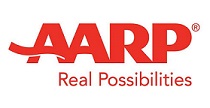 AARP: The nation's largest nonprofit, nonpartisan organization dedicated to the empowerment of Americans 50 and older so that they can choose how they live as they age. AARP relies heavily on member feedback to help shape everything from their advocacy positions to volunteer opportunities to new online health tools. They work to develop public policy recommendations that serve the interests of their members.
AARP: The nation's largest nonprofit, nonpartisan organization dedicated to the empowerment of Americans 50 and older so that they can choose how they live as they age. AARP relies heavily on member feedback to help shape everything from their advocacy positions to volunteer opportunities to new online health tools. They work to develop public policy recommendations that serve the interests of their members.
- Identify local resources and services
- Care Guides to assist with all different types of caregiving
- Prepare to Care: A Caregiving Planning Guide for Families
- A Helping Hand for those Caring for Loved Ones - five steps every caregiver should take
The Administration for Community Living (ACL): The ACL advocates across the federal government on behalf of older adults, people with disabilities, and family and caregivers. In addition, they fund services and supports - primarily those provided by states and community-based programs - and invest in training, education, research, and innovation.
- Information to link individuals to home- and community-based services in their region.
- Aging and Disability Resource Centers Program/No Wrong Door System - supports state efforts in streamlining access to long-term services and supports for older adults and people with disabilities.
- Centers for Independent Living (CILs) - CILs provide information and referral to services and supports available in the community.
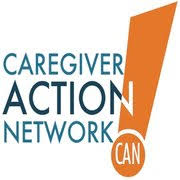
The Caregiver Action Network (CAN), previously the National Family Caregivers Association, is working to improve the lives of a broad spectrum of caregivers including those who care for loved ones with chronic conditions, disabilities, disease, or old age.
- Family Caregiver Toolbox - links to information, resources, video series, and support for caregivers. Resources include checklists for doctor visits, links to locate community resources and aid, as well as information for employers.
 Help for Cancer Caregivers - a collaborative organization working to improve the health and well-being of individuals who care for people with cancer by addressing concerns from personnel well-being to medication management, education and employment.
Help for Cancer Caregivers - a collaborative organization working to improve the health and well-being of individuals who care for people with cancer by addressing concerns from personnel well-being to medication management, education and employment.
- Library of online resources
 National Alliance for Caregiving: The National Alliance for Caregiving (NAC) advances family caregiving through research, innovation, and advocacy. Their members include grassroots organizations, professional associations, service organizations, disease-specific organizations, government agencies, and corporations.
National Alliance for Caregiving: The National Alliance for Caregiving (NAC) advances family caregiving through research, innovation, and advocacy. Their members include grassroots organizations, professional associations, service organizations, disease-specific organizations, government agencies, and corporations.
Family Caregiver Alliance: The Family Caregiver Alliance is the first community-based nonprofit organization in the country to address the needs of families and friends providing long-term care for loved ones at home. They are a public voice for caregivers, shining a light on the challenges caregivers face daily and promote their cause through education, services, and advocacy.
Local Resources
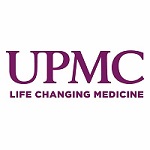
The Aging Institute of UPMC Senior Services and the University of Pittsburgh provides integrated, comprehensive, and timely access to a full range of services for aged persons and their loved ones. Offering state-of-the-art educational programs for the public and health care professionals, as well as promoting innovative research on aging to understand its causes and concomitants, and how to best intervene in age-related illnesses.
- Information and referral line to answer questions about community resources, caregiver support, care coordination options and healthy aging tips for seniors.
- Aging Institute at UPMC McKeesport helps older adults, caregivers, family members, and the community find the resources they need.
- Depression and Adjustment in the Nursing Home Resource Tool Kit - prepared by the Palliative Care Education Working Group and Geriatric Education Center (GEC), this tool kit is for older adults transitioning into long term care settings and their caregivers.
Area Agency on Aging: Within the Allegheny County Department of Human Services, the Area Agency on Aging (AAA) assists Allegheny County Residents 60 years of age and older to live safe, healthy, and whenever possible, independent lives. They provide various services to older adults and their families, including those looking to remain in their homes and those needing skilled care.
- Caregiver support programs including supports for caregivers of children, caregivers of individuals with disabilities, as well as grandparents who may find themselves in the caregiving/parenting role with their grandchildren.
- SeniorLine (412-350-5460; toll free 1-800-344-4319) provides information on receiving services through AAA.
- Information to protect from abuse and neglect, community centers for seniors, services for adults who need assistance but want to remain in their homes, adults who need skilled care, and support and information for caregivers.
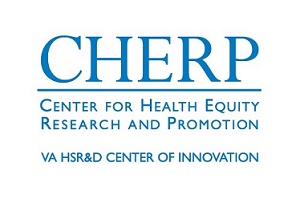 Center for Health Equity Research and Promotion (CHERP): CHERP is a VA Health Services Research and Development Center of Innovation whose mission is to advance the quality and equity of health and health care for vulnerable Veterans populations.
Center for Health Equity Research and Promotion (CHERP): CHERP is a VA Health Services Research and Development Center of Innovation whose mission is to advance the quality and equity of health and health care for vulnerable Veterans populations.
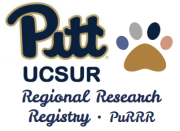 Pitt UCSUR Regional Research Registry (PuRRR): PuRRR is a Caregiver Research Registry with approximately 1,000 local family caregivers willing to participate in research. In addition to socio-demographic variables, care recipient age is available for targeting samples. This is part of an IRB-approved research registry currently containing over 9,000 regional residents.
Pitt UCSUR Regional Research Registry (PuRRR): PuRRR is a Caregiver Research Registry with approximately 1,000 local family caregivers willing to participate in research. In addition to socio-demographic variables, care recipient age is available for targeting samples. This is part of an IRB-approved research registry currently containing over 9,000 regional residents.